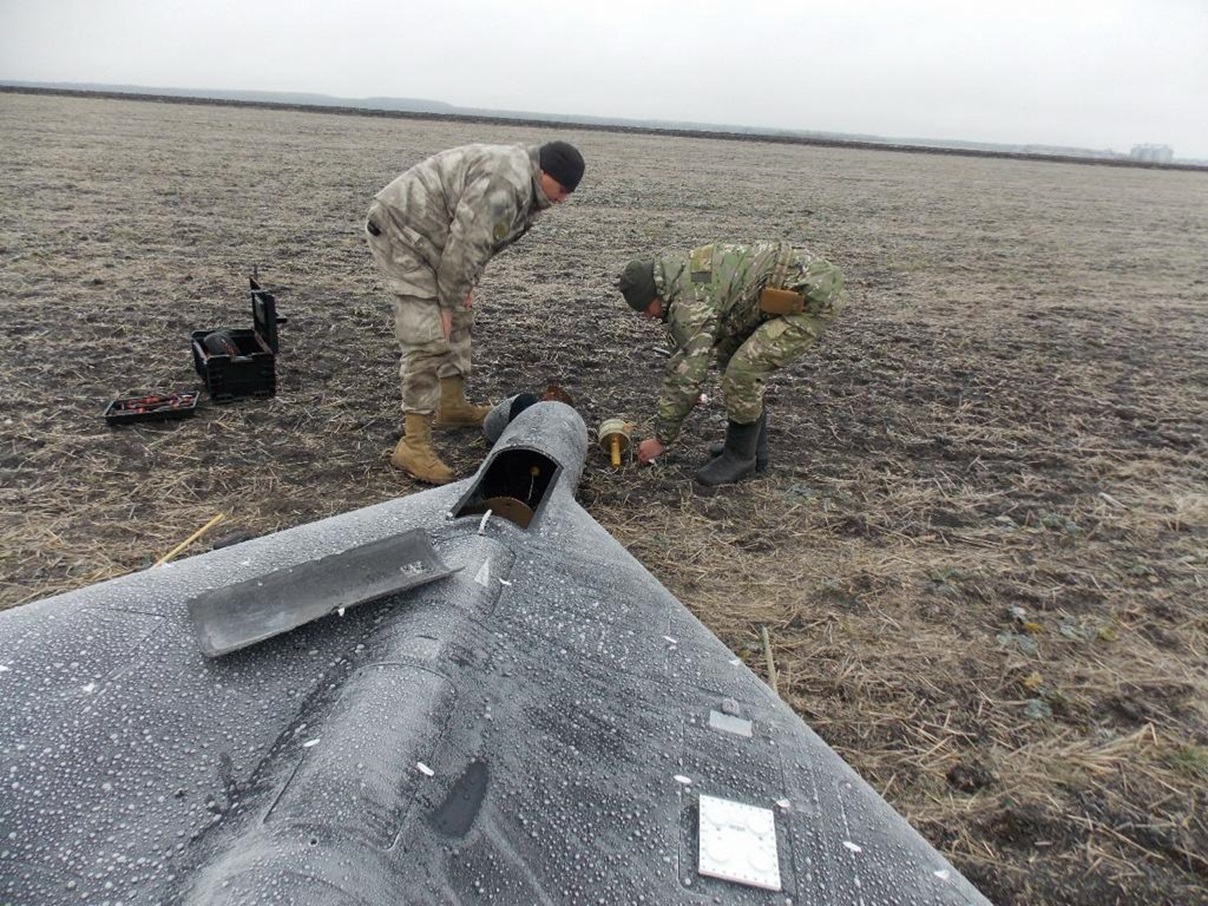Ukrainian soldiers have found an almost fully intact Shahed-136, a kamikaze-type drone that is used by the Russian military for conducting strikes on critical infrastructure and civilian targets.
This well-preserved drone was found in a field following the recent extensive Russian massive, combined air attack on Ukraine. Judging from the available images, it appears that the drone was brought down by an undisclosed electronic warfare system.
Of particular note is the unconventional black exterior of this kamikaze-style drone. This specific variant of the Shahed-136 has only recently been deployed in strikes against Ukraine. Ukrainian anti-aircraft units have repeatedly managed to successfully intercept these drones. Upon closer examination of the recovered drone’s remnants, several modifications have been identified, encompassing changes in the drone’s structural materials, navigation system, and warhead.
The latest Shahed drones now incorporate Russian-made Kometa digital antennas in their navigation systems, a strategic adaptation aimed at reducing susceptibility to enemy jamming. This technology shares similarities with that used in Russia’s UMPK glide bombs.

Additionally, the new Shahed drones feature composite bodies filled with a solid foam-like material, a departure from their earlier modular counterparts with honeycomb cell-like structures. The decision to paint the Shahed-136 drones in black serves the purpose of complicating visual identification, particularly during nighttime operations.
It’s important to highlight that Russia assembles these drones, referred to as Geran-2, in a facility located 500 miles east of Moscow in the Tatarstan region, utilizing kits supplied from Iran. Western intelligence reports suggest that the Kremlin is ramping up the production of these drones, with plans to enhance localization by establishing additional manufacturing facilities for their components over time.